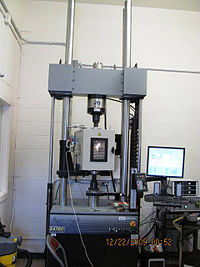
Photo from wikipedia
Abstract Noise pollution in urban acoustic environment has become considerably serious as cities become overcrowded and ground traffic increases. In particular, high-rise buildings with a hard reflective facade built from… Click to show full abstract
Abstract Noise pollution in urban acoustic environment has become considerably serious as cities become overcrowded and ground traffic increases. In particular, high-rise buildings with a hard reflective facade built from glass, stone, and metal are the main causes of increased ambient noise levels. An appropriate architectural design of a building envelope can significantly reduce the noise level acoustically and improve soundscape perceivably. The purpose of this study is to conduct a systematic review of building design elements for better urban acoustic environment based on previous acoustical studies, and to derive building envelope design strategies from the building envelope design elements. The included articles have been grouped into two main categories according to research approach: noise abatement and soundscape. A meta-analysis of noise abatement demonstrated that geometric and material building envelope design elements can reduce outdoor noise levels. Soundscape design elements were extracted from studies conducted during the recent decades. Two traditional acoustic strategies, namely, fragmented and textured surface and increased sound absorbing materials, and two methodological strategies in the upper layers, namely, multisensory design and integrated design strategies, were derived from the building envelope design elements. Vegetation on building envelopes has been found to have good performance in both noise abatement and soundscape performance. Architects and urban planners should consider acoustic aspects, whereas acousticians should consider architectural factors applicable to real buildings. A good urban acoustic environment can be achieved through collaborative efforts among architects, acousticians, urban planners, and others.
Journal Title: Building and Environment
Year Published: 2020
Link to full text (if available)
Share on Social Media: Sign Up to like & get
recommendations!